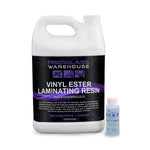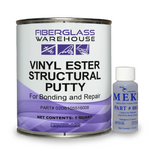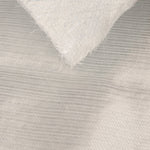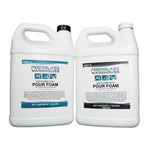You have no items in your shopping cart.
Building or repairing a boat can be a daunting yet rewarding endeavor. Whether you're a professional in the marine industry or a DIY enthusiast, using the right materials can make all the difference. One incredibly versatile material is polyurethane boat pour foam.
In this blog post, we'll explore what boat pour foam is, its benefits, and where it is typically used. We'll also provide basic instructions on how to use it, along with some handy tips and tricks to ensure you get the best results.
What Is Closed Cell Polyurethane Boat Pour Foam?
Closed cell polyurethane boat pour foam is a type of liquid foam that expands and hardens into a rigid, high-density substance. It's widely used in the marine industry for a variety of purposes. The "closed cell" structure means that the foam cells are completely enclosed and not interconnected, which makes it more waterproof and buoyant.
Boat pour foam consists of two components that, when mixed together, create an exothermic reaction that causes the foam to expand. This expansion allows the foam to fill cavities and voids, making it ideal for various marine applications.
Common Uses of Polyurethane Boat Pour Foam
Structural Support
Polyurethane boat pour foam is often used for structural support in boat hulls. Its expanding nature allows it to fill cavities and gaps, providing additional rigidity and strength to the boat's structure. This makes it an ideal choice for both new construction and repairs.
Flotation and Buoyancy
One of the most critical uses of polyurethane foam in marine applications is to provide flotation. The foam's closed-cell structure means it won't absorb water, ensuring that even if your boat takes on water, it will remain buoyant. This makes it an invaluable safety feature for any vessel.
Insulation and Soundproofing
Apart from providing structural support and flotation, polyurethane foam also offers excellent insulation properties. It helps maintain a stable internal temperature, protecting sensitive equipment and creating a more comfortable environment for passengers. Additionally, it acts as a sound barrier, reducing noise from the engine and the water.
Why Use Polyurethane Pour Foam?
Ease of Application
One of the primary reasons to use polyurethane pour foam is its ease of application. Whether you're a seasoned professional or a DIY enthusiast, you can mix and pour this foam without specialized equipment. Its expanding nature ensures it fills all gaps and voids, providing a seamless finish.
Durability
Polyurethane foam is incredibly durable. Once it cures, it forms a rigid structure resistant to chemicals, moisture, and physical damage. This longevity makes it a cost-effective solution for both structural and non-structural applications in boat building.
Versatility
The versatility of polyurethane pour foam is another compelling reason to use it. From providing flotation to insulation and structural support, this material can do it all. Its adaptability makes it suitable for various types of boats, from small fishing vessels to large yachts.
Basic Instructions on How to Use Boat Pour Foam
Using closed cell polyurethane boat pour foam is a straightforward process, but it requires careful preparation and execution to achieve the best results. Follow these basic steps to get started:
- Preparation: Begin by planning where you want to apply the foam. Make sure the area is clean, dry, and free of debris. Wear appropriate protective gear, including gloves and safety glasses, as the foam can be harmful if it comes into contact with your skin or eyes.
- Mixing: Boat pour foam comes in two separate components that need to be mixed together. Follow the manufacturer's instructions carefully to ensure the correct mixing ratio. Use a clean container and stir the components thoroughly until they are well combined.
- Pouring: Once the components are mixed, pour the foam into the desired area. The foam will begin to expand rapidly, so work quickly and efficiently. Be mindful of the expansion rate to avoid overfilling the space. It's better to apply the foam in smaller increments rather than trying to fill a large area all at once. If pouring into an enclosed space, you will want to add venting holes. Foam has a lot of power when expanding.
- Curing: Allow the foam to cure according to the manufacturer's instructions. This typically takes a few hours, but curing times may vary depending on the specific product and environmental conditions. Once fully cured, the foam will be rigid and ready for use. At this point, you can sand the pour foam if needed. Fiberglass and resin can also be used once the pour foam has fully cured.
Tips and Tricks for the Best Results
To ensure you get the best results when using closed cell polyurethane boat pour foam, keep these tips and tricks in mind:
Use the Right Temperature
The room temperature that you apply the foam in can significantly impact its performance. Ideally, the ambient temperature should be between 70°F and 80°F (21°C to 27°C). Higher temperatures can cause the foam to expand too quickly, while lower temperatures may slow down the curing process. Also, make sure not to work in high humidity. Humidity can greatly affect the expansion rate.
Apply in Layers
For larger areas, it's best to apply the foam in layers rather than trying to fill the entire space in one go. This allows for better control over the expansion and helps prevent overfilling. Each layer should be allowed to cure before applying the next one.
Ventilation is Key
Adequate ventilation is crucial when working with boat pour foam. The chemical reaction that occurs during the curing process can release fumes that may be harmful if inhaled. Work in a well-ventilated area and consider using a fan to help disperse any fumes.
Conclusion
Polyurethane pour foam is a versatile, durable, and cost-effective material that can revolutionize your boat-building or repair projects. Its ease of application, enhanced safety features, and multiple benefits make it an ideal choice for professionals and DIY enthusiasts alike.
By understanding its uses, benefits, and application techniques, you can leverage this material to enhance the performance, safety, and longevity of your boat. Ready to get started? Explore our range of polyurethane pour foam products and take the first step towards a better boat-building experience.
For more information and expert advice, don't hesitate to contact us. Our team of specialists is here to help you make the most of this material.
See Fiberglass Warehouse Boat Pour Foam in use on FishBumpTV. You don't want to miss all the valuable information in this YouTube video- Click HERE.
comments (2)
-

-
 Freddiecastilo
FreddiecastiloWher can we b j y urethane foam for fishing g vessel










@Freddiecastillo- www.fiberglasswarehouse.com . Click on Boat Pour Foam in the top menu to find our polyurethane foams.